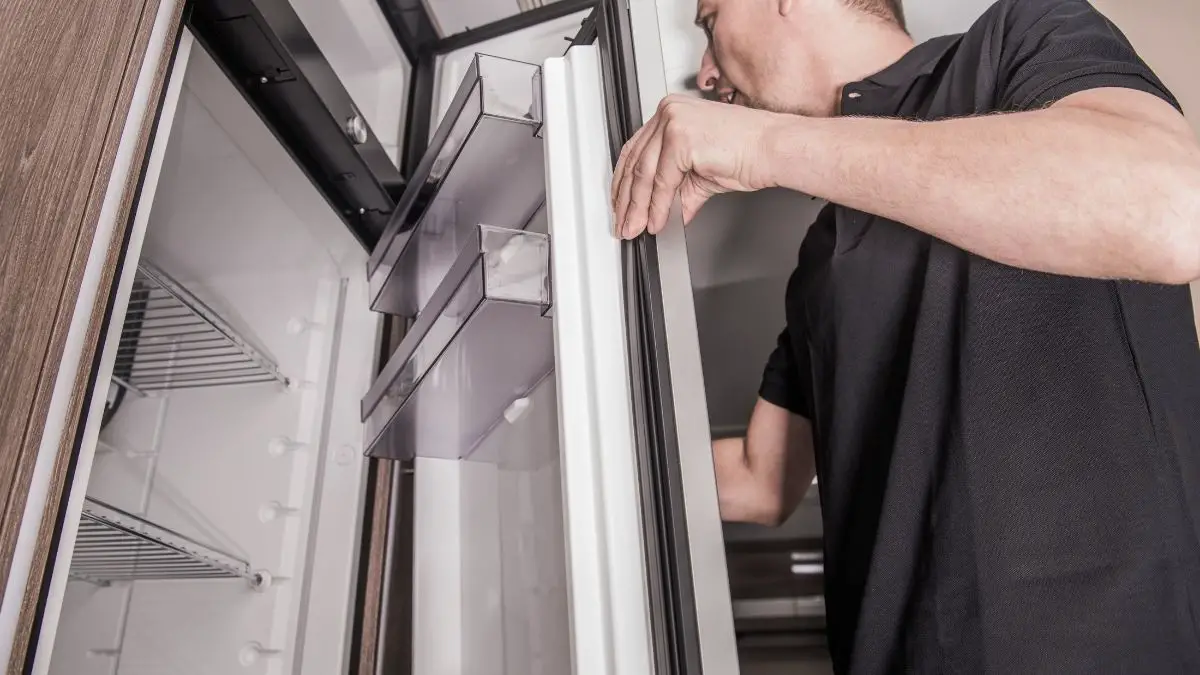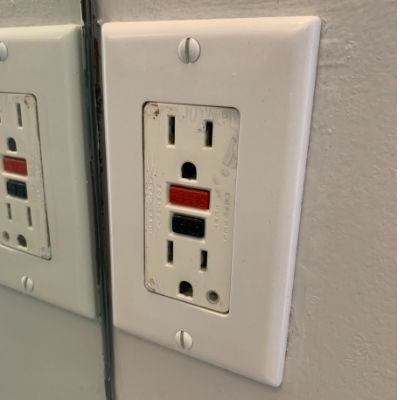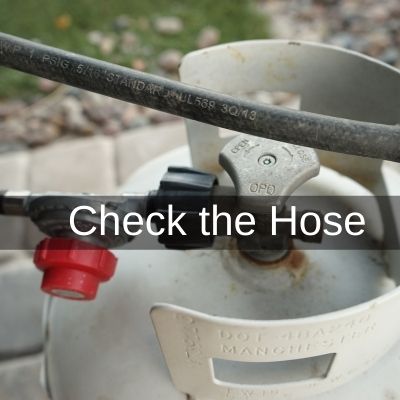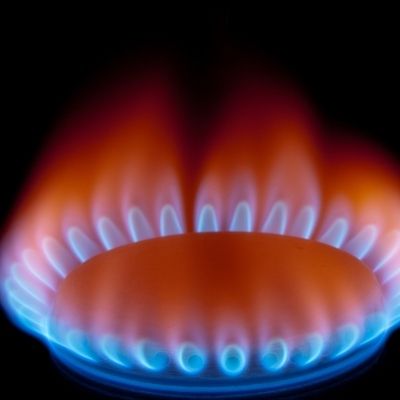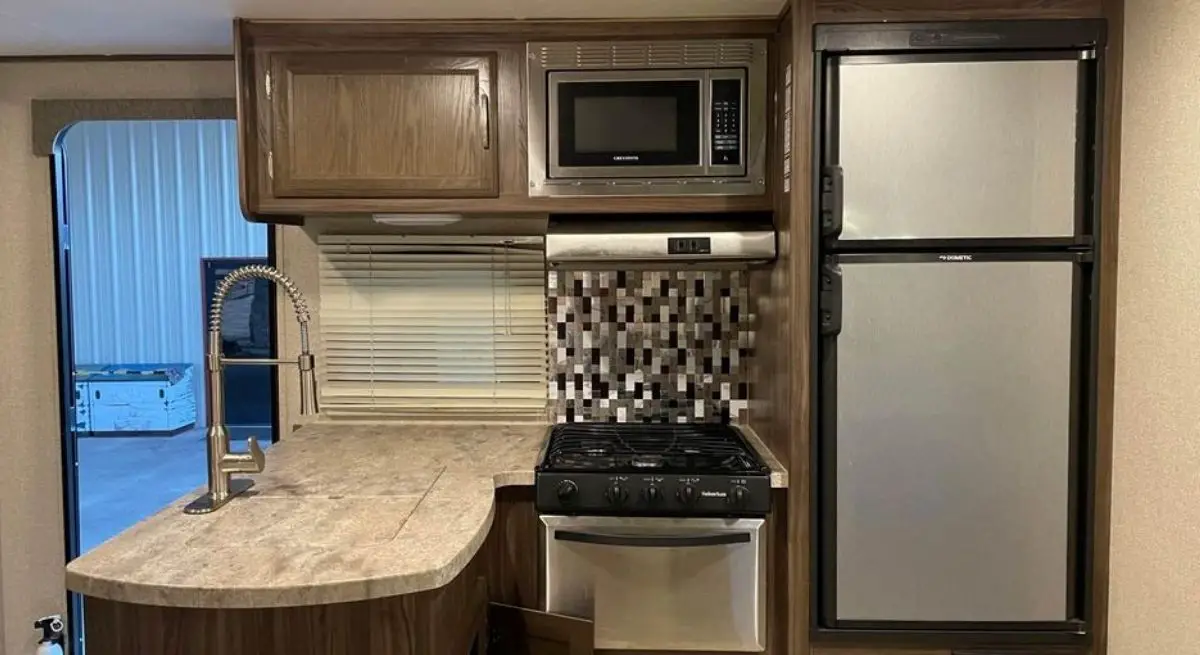Whether you’re getting ready to head out on your RV for the weekend, or have been living in one for more than that, we often expect that our own RV fridge would work properly all the time. Nobody wants to get all excited on their trip, only to find out their RV fridge isn’t working properly. I’ve compiled the most common questions to help with the troubleshooting in case you’re experiencing any of the following problems.
Disclaimer: This article serves only as a troubleshooting guide and it’s best to stay on the conservative side so you don’t mess up any warranty on the unit.
Why Is My RV Fridge Is Not Working?
Because it’s such a general question, it would help to really identify what exactly the problem is first. For that to happen, it’s important to understand how a RV refrigerator works since there are a lot of different types and models of RV refrigerators out there. I’ve written an article just on that which you can find Here.
When we troubleshoot, it will be a series of trial and errors to figure out the root cause of the problem. So, to figure out why your fridge isn’t working, we’ll need to go through a few clarifying questions (below), which could navigate us to the other sections of this article:
- Is your RV level? I’ve written an article on this HERE.
- Do you know what make and model of your RV fridge is? I ask this since there may be features on your fridge that aren’t available on older models. That, and also because the parts we’ll be referring to later will be located differently on different RV fridges, so it’s always best to refer to your fridge’s user manual.
- Is the RV fridge switched on? As simple as this is, it sometimes happens.
- Is it properly plugged into the electricity or propane? If yes, go see next section
- Does the fridge switch on but there’s temperature problems (too hot/too cold/not cooling)? If yes, go HERE
Once we have a general idea of what could be causing your fridge not to work, we can go now focus on a little nitty gritty details.
Why does my RV fridge keep shutting off?
Because this is also a general question, we will go through a few clarifying questions again to sort out where we need to go since there could be inconsistent or insufficient electricity (AC/DC) or propane powering up your fridge.
Is it currently connected to electricity or propane? Whether you have a 2-way or 3-way fridge, try switching it to the other power source(s) first to see if it works.
Does it work (or work better) on electricity but not on propane (or vice versa)? If yes, then we can go to the specific section below.If the fridge still keeps shutting off on either propane &/or electricity (AC/DC), and you’ve tried the troubleshooting steps here and if there are any suggested by the manufacturer, might be best to get a technician to check it.
My RV Fridge Won’t Work on Electric
Insufficient or inconsistent voltage (AC/DC) can be the first suspect. If your refrigerator isn’t getting enough power, you could check the control panel for operation. The control panel uses 12-volt DC power, so if the interior fridge light (which illuminates when the door’s open) doesn’t switch on, you may need to check for a blown fuse or low coach battery power. That, or check the power distribution panel/circuit breaker if any of the interior circuit breakers are in order. If you’re plugged in, just note that it’s also common for the power voltages to drop in RV parks during peak hours. If you’re on solar, make sure you have enough juice in your batteries.
If let’s say you don’t have any problems with the AC/DC source, the fuse or circuit breaker on your RV, and your RV fridge is still shutting off on electricity, there may be issues with the refrigerator’s control board or maybe the wiring. Usually this is accompanied by other signs, so you can visually inspect the back of your RV fridge to just see if there are any exposed wires that look damaged or melted. At this point, I would suggest that you don’t touch any exposed wires (nobody wants to get electrocuted), shut off the fridge, and get professional advise, especially if the fridge is covered by any warranty (do check your warranty coverage and if there’s anything that would void it). Assuming that there’s nothing wrong in your RV electrical system (no blown fuses/circuit breakers), and your fridge simply won’t turn on (even the internal light when you open the fridge door), your fridge’s own fuse (inside the control board) could be blown.
If you recall how the RV absorption refrigerators work, on an average, the heating element should get warm on AC power even after 30m. If this doesn’t happen, there may be electrical problem in your unit. Best to call a technician to see if this is something that can be repaired or not.
My RV Fridge Trips the Circuit Breaker
It would help if you’re relatively familiar with the electrical circuitry in your RV, since we need to understand if there could be a problem with your RV fridge, your RV circuitry, or the electrical power source you’re using. Knowing also the type of circuit breaker(s) you have on your RV will be beneficial.
A circuit breaker or fuse is intended to trip or blow before circuit wires can reach a dangerous level. This can happen when the circuit is overloaded, usually due to too many appliances or lights operating at the same time, or you don’t have enough circuits in your RV.
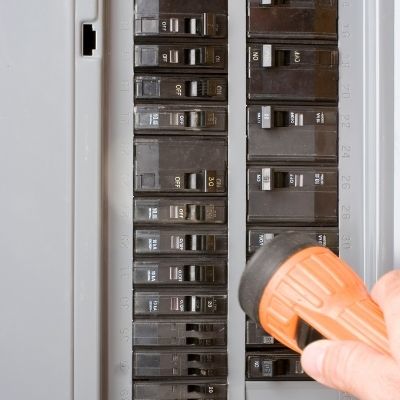
Your circuit breaker could also trip if you get a short circuit, which can be caused by faulty wiring in an appliance that’s plugged into an outlet along the circuit, this means it could be your fridge, but maybe another appliance that’s connected to the same circuit.
This is the reason why figuring out a short circuit is a bit trickier to diagnose and fix, and you may need help from your RV electrician. But if, let’s say you reset the tripped circuit breaker where your RV fridge is connected, and it trips again, then it may indicate you would have a short circuit.
Another reason that the circuit breaker where your RV fridge is on could trip, could also be because of a ground fault, which is dangerous since there’s a risk of getting shocked, especially since these occur in areas with high moisture levels (kitchen/bathroom) — which is what ground fault circuit interrupters (GFCI) outlets can protect your system from since it shuts off the electrical current in a fraction of a second.
If ever your RV has arc-fault circuit interrupter (AFCI) circuit breakers, they could trip on either an electrical overload, a short circuit, a ground-fault, or an electrical fluctuation that may occur when sparks (“arcing”) happen in the contact points of a wired connection (e.g. loose screw terminal connection in a switch or outlet). Repeated tripping of your AFCI breaker can indicate there may be loose wire connections along the circuit, which leads to the repeated arcing.
Be vigilant when tracing the different variables that can trigger your circuit break to trip. Especially when you have different options for your AC source (e.g. shore power, generator), and the amps of the campground outlets (30A, 20A, 15A) and if they’re also equipped with GFCI outlets.
My RV Fridge Won’t Work on Propane
An RV fridge that’s set to run on propane is a little more straightforward to troubleshoot, compared to when it’s set on AC/DC power. I like to follow the flow of the gas from the source, which is where we’ll start:
Do you have enough propane in your tank?
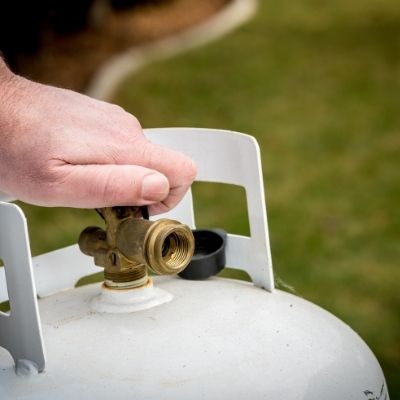
Unless you have an inline pressure gauge that will give you an accurate reading of how much gas is in the tank, there are some ways to get an approximation of how much there is, if there is any at all.
Pro Tip: One trick is to fill a cup with hot water, pour it along the side of the tank, and then run your hand along the tank, to see if there’s a cool area. The heat from the water will be absorbed by the liquid propane inside the tank. It may not be that accurate, but it’s a lot better than sniffing the tank at the valve (please don’t do that). Another way to find out if there’s enough propane in the tank is by weighing the tank. If you’re used to the weight of your propane tank(s) when it’s full versus when it’s empty, it’s a good guesstimate, but if not, you can use a weighing scale to check.
Assuming that all the other components of your RV propane system (valves, hose/pipes, etc.) are working properly, and you have a newly refilled propane tank, but the fridge still doesn’t work, then there may be an air lock in the propane lines.
This can be solved by turning on one of your propane stove burners (assuming you’re using one) to let the system ‘bleed’ a bit until you get a consistent blue flame. If you’re having problems even getting the propane stove burner to light, you could try to slowly switching the burner on.
Don’t forget to turn the propane stove burner off when you’re going to do the troubleshooting on the fridge. To prevent air locks from happening, slowly open the propane tank whenever you need to use it.
Are the propane lines in your propane system intact?
Visually inspecting the hose/pipes/valves from the tank to the fridge for any dents/cracks is important. If there are any spots (even the at the regulator valve) that you suspect may have a crack or potential leak, if you smell the propane &/or you pour water on it and it bubbles up, immediately switch the propane tank off.
This includes checking the propane regulator is properly hooked up to the tank and the pipes/hose and is sealed properly is also important. Propane regulators measure the flow of the gas, and have a safety feature that shuts off the tank if the pressure gets too high. If ever you have a bad propane regulator, that may be the issue.
You’ll notice that your propane stove burner might have a yellow, instead of the normal blue, flame. You may also notice popping sounds and/or maybe even soot deposit. These are not normal especially since propane is a clean burning fuel that doesn’t create soot or smoke, like wood fires.
Propane regulators aren’t meant to last forever and have an average lifespan of around ten (10) years. If there’s still no gas flow, you could try to reset the regulator by turning off all all propane appliances to allow the regulator to reset. In the event that you do venture out on your RV during cold weather, a frozen regulator can also be something to look out for.
Does the igniter coil work properly and the pilot flame light up?
Or does the RV fridge pilot go out?
Assuming the flow of the propane is not an issue and the the fridge pilot light doesn’t light up (or it goes out), there are a few factors to consider. If your RV fridge has an autochanger and the pilot flame light doesn’t work, it could be a problematic igniter coil, or maybe a clogged up flute. If you think it’s the igniter coil, you could try manually lighting the pilot flame.
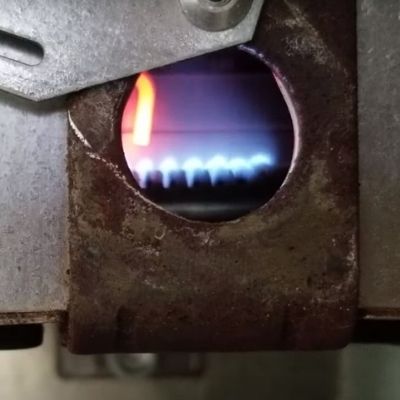
If it’s a dirty or clogged up flute (due to dust or any possible sediments from the propane tank or the pipelines), cleaning it should help (see next section). The solenoid can also get clogged from gunk from the gas line, it can be taken apart and cleaned. Another thing to consider is if the control board issue might not be getting the voltage to turn the solenoid on. If ever it’s really cold &/or windy, we all know a lot of RVs aren’t really that well insulated, it may be something to consider while troubleshooting.
Does the quality of the pilot flame look good and steady?
If ever your pilot flame does light up, but it looks a bit lower than usual or dull, it could be one or a mix of any of the following:
- poor propane flow (low propane, air blocks, sedimentation, etc.)
- dysfunctional thermocouple (which is what controls the propane flow)
- clogged/dirty flute, burner tube or orifice inside the flame area
- dirty sensor due to residue &/or rust build up (which confuses the sensor and turns the flame off)
- yellow pilot flame = may indicate soot in the burner & flute which can be cleaned with an air compressor
How do I manually light the pilot on my RV refrigerator?
Your RV refrigerator will come with an operating manual to show how to manually light the pilot flame. Depending on the model of your fridge, if it has manual switch between propane and power, make sure to switch the propane line off if switching to propane before switching to AC power. When switching to propane, make sure the gas knob is on to allow gas supply switch. consistently press the gas supply switch to allow gas in, and click on the striker/igniter a few times, before slowly releasing the gas switch. If this does not work, you could retry a few more times. If the issue is the igniter coil/striker, you can open the small window covering the pilot flame and use a lighter to get the fire started.
Fridge Temperature Problems
My RV Fridge gets too hot
I’ve explained in a previous article that heat is required to get the cooling system working in your RV refrigerator. But, if ever the boiler is warm, and the absorber is very hot, there might be a leak somewhere. If there is an ammonia smell &/or yellow residue outside cooling unit, this confirms an ammonia leak.
Because heat is a by-product of the RV fridge‘s cooling system, proper ventilation is needed to keep the whole unit working properly. This can become a challenge, especially during summer, since the ventilation system in an RV are just ducts meant to keep water out and passively allow heat to escape but not really allow cool air in.
Poor ventilation at the back of the fridge can be addressed by adding a fridge vent fan which you can easily purchase online, and also evaporator fin fans to help the cool air inside your fridge circulate better (so your fridge doesn’t have to work too hard).
My RV Fridge Won’t Get Cold
If you haven’t used your fridge in awhile, and provided you’ve followed your RV fridge manufacturer’s suggestion to let your unit run the day before using it, and still the fridge won’t get cold, you can try going through the troubleshooting tips in the previous sections if ever you may have not noticed other signs your fridge is showing.
A good thing to invest on is a good thermometer for your fridge since they’re not too expensive and can help detect if there’s something wonky with your thermistor (e.g. too much temperature variation, since it is the one that detects fridge temperature). Other than that, there also could be a blockage in the cooling system (see next section why) especially If your RV is parked on an uneven surface or the fridge isn’t used for awhile, sediments can settle, and even if you move the fridge around, build-up can happen again.
My RV Fridge Take So Long to Cool
Provided you followed the manufacturer’s instructions to turn your RV fridge on at least one day before use to allow it to cool, and it’s still not cooling properly, there could be a one, or a mix of a few reasons your RV fridge would take so long to cool:
- faulty thermostat problems
- fridge is stuffed and/or not enough space for the cool air to circulate
- the diffuser fan isn’t working properly or is blocked by ice or something in your fridge
- problem with the cooling system (fridge is not level, possible leak, not enough power/heat for the to heat the refrigerant, etc.) — refer to the section accordingly
Do check the other sections of this article to see if ever there are any other signs that can also be occurring.
My RV refrigerator isn’t cooling but the freezer works
If the diffuser gets clogged with ice, the evaporatorfan might not work. Do note that the diffuser doesn’t run consistently, but in cycles, so if you’re trying to check if the diffuser works, do wait awhile. Your fridge may also be working on the bare minimum electricity/propane. Check the cooling system at the back of the fridge to see if the system is working properly (refer to the previous sections of this article to check), but also be careful not to directly touch the heating element since it may cause burns.
My RV Fridge Smells Like Ammonia
If you recall the basics of how an absorption refrigerator works, as I’ve mentioned in a previous article, ammonia, together with hydrogen and water, is used as the refrigerant inside your absorption fridge’s closed cooling system. The cooling system should be properly sealed and welded together during assembly to prevent leaks. If the unit is working, but the boiler or absorber is hot, and you smell ammonia, there’s probably a leak somewhere. To confirm this, you can check the back of your RV fridge, and if you see any yellow residue outside the cooling unit confirms this concern.
About Norcold & Dometic Refrigerators
An RV technical adviser explains that even some of the most popular fridges like Norcold & Dometic can fail because of the fundamental setup of an RV fridge’s absorption cooling system’s need to always be on a level surface.
The cooling process starts at the boiler, but this is also where rust pits can occur due to a multitude of factors. The refrigerant inside the cooling system is ammonia, but there’s also hydrogen and water inside the system for the chemical reactions needed for your fridge to work. The ammonia needs to get back into the boiler, but could be a challenge if your fridge:
- isn’t level
- the ambient temperature is too high or low (poor ventilation or it really is just too hot/cold)
- heat source failure in the system
- or winds are too strong that it prevents air circulation
When the ammonia stops rising into the boiler, the temperature rises and the water boils. This now causes an increase in pressure and temperature. Because the liquid reduces, this concentrates the rust prevention chemical on the inside of the boiler causing it to precipitate out of solution and form crystals. Since the internal unit isn’t protected anymore due to the changes in the rust prevention agent, the boiler warps cause cracks and flaking on the inside, which can lead to rust pits.
Preventive Measures: Cleaning & Maintenance
Prevention is always better than the cure, so to make sure this never happens to you, it would be great if you could prepare a checklist of the things that need maintenance on your RV, including a list of things you need to do before, and AFTER the trip (like making sure the fridge is cleaned and left a little open for the air to circulate, and gas/power is off).
- make sure your RV is level, and if possible, make sure to drive on flat roads since emergency pullovers, flat tires, bumpy or steep roads can off-set the cooling system
- Be mindful of the ventilation for your fridge especially if the ambient temperature is too hot or too cold
- Turn the fridge off If driving on steep or uneven roads
- Clean the inside & outside, including the back part and the vents near the access of the fridge, and always clean out fridge at end of use to prevent mold
- Check that there are no loose connections
- You can add upgrades like getting:
- a thermometer for your fridge
- Fridge auxiliary/vent fan for your RV roof vent to actively pull out the hot air, allowing the cool air to circulate. Companies like Dometic are offering RV roof fans & vents, but there are so many other options, so do your research as to which one would suit you best.
- Frost Guard Refrigerator Evaporator fin fans to circulate the cool air inside your fridge, so the cooling system doesn’t work too hard. Dometic’s AR-VKIT or
- Fridge Defend by ARP claims to protect the RV fridge by keeping your operating boiler in safe limits by detecting the lack of flow of ammonia and the detecting the temperature increase to prevent the thermal stress and prevent the water from boiling (which would lead to the rust pits)
Conclusion
Hopefully this has helped as a detailed guide to troubleshooting your RV refrigerator. Always make sure you have your RV refrigerator’s Operating Manual / User’s Manual on your RV (or a copy of it). And just in case you can’t find your own manual (if let’s say you got the fridge as part of a second hand RV, or it just got misplaced), you can easily check the internet since some manufacturer’s do put the manuals online.

